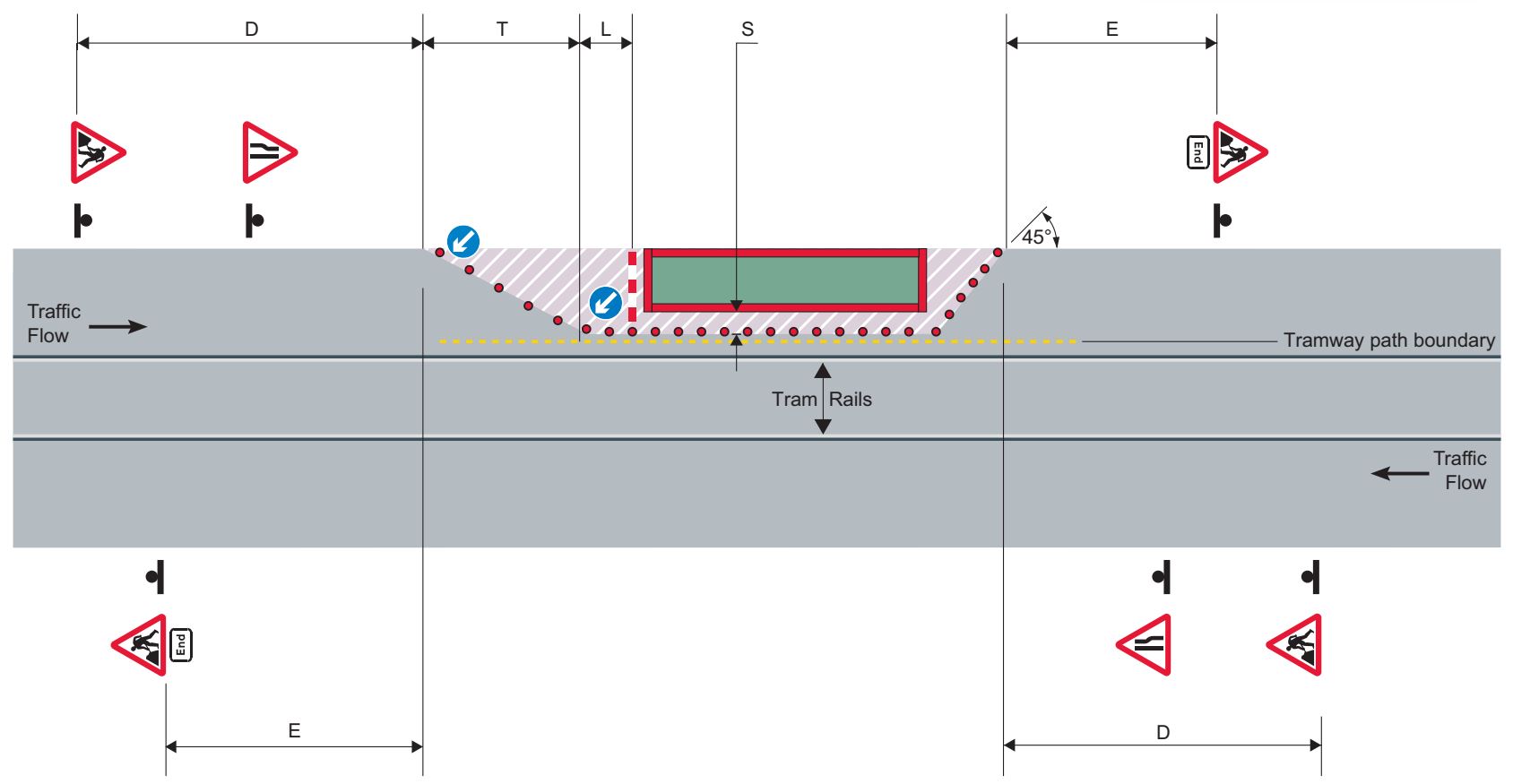Streets with tramways should be identified before works begin, and the job instructions must contain the special safety precautions to be taken when works are to be carried out near a tramway.
Warning: Before carrying out works in a street with a tramway, the tramway operator and highway authority must be consulted. The tramway operator will set out safety requirements to ensure safe working and to minimise the impact of works on operation of the tramway. These requirements must be followed.
Those planning the works should ensure that:
- the method of carrying out works in the part of the street containing the tramway is acceptable to the tramway operator;
- the works plan and sections have been approved by the tramway operator, if appropriate; and
- the supervisor, manager or other competent person arranges for the works to be carried out in accordance with the approved plan and sections. These drawings should be available on site while work is in progress.
 Notes
Notes
- For numbers and minimum size of cones, and dimensions D, T, L, S and E, see table in the Setting out site section of this Code.
- An information board (omitted here for clarity) must be displayed.
Some tramway operators have developed standard conditions for work being carried out close to a tramway. These may include a requirement to obtain a permit to work from them that will set out the times when work close to the tramway may be undertaken, and the safety precautions that need to be followed.
If the works are emergency works and police are in attendance, you should take your instructions from the police. They will liaise with the tramway operator and advise you when it is safe to start the works. Otherwise you must contact the tramway control centre to notify them of the need for the works. They will then advise you when it is safe to begin working.
Risk of collision with the tramcar
Unlike other traffic, a tramcar cannot swerve to avoid a person or obstruction. Tramcars are wider than the tracks on which they run. The path of a tramcar and the area adjacent to it, known as the tramway path, contains its own safety zone and must be kept clear of any obstructions. The area may be marked, for example by a line of round yellow stud markings, a painted line or a raised kerb.
It is essential that no one enters the tramway path and that nothing (for example signing and guarding equipment, vehicles, or materials) is placed there. Equally, the moving parts of plant (for example buckets or counterweights) must not swing around into this obstruction-free zone. Where the works cause the footway to be diverted into the carriageway, cones marking the traffic side of the safety zone must not be closer to the trams than the edge of the tramway path.
Where the road layout means the normal sideways clearance would intrude into the tramway path, those planning the works should discuss the possibility of reducing the safety zone with the tramway operator. Such a reduction, subject to an absolute minimum of 0.3 metres to allow for the tram’s swept path, is permissible with the agreement of the tramway operator. The tramway operator may impose a speed restriction on tramcars and/or provide a lookout. The highway authority should also be consulted to see if a temporary speed restriction is needed. If this is only realised on site, then the supervisor, manager or other competent person must consult the tramway operator straight away.
Risk of electrocution
Tramway electrical supplies, consisting of overhead lines or underground cables, may be located outside the obstruction-free zone. The tramway operator’s requirements will state whether the electricity needs to be disconnected before work can be carried out. Work must not begin within 3 metres of overhead lines until a certificate has been received from the tramway operator stating that the electricity has been disconnected and made safe. Similarly, the electricity cannot be reconnected until your organisation has certified that the site is clear of men and machinery (including moving parts of machinery, for example the bucket on an excavator) within 3 metres of the overhead line. Your supervisor, manager or other competent person, will find out how close to the tramway you can safely work while the electricity is still connected.
No equipment, plant, vehicles, etc. should be brought within 3 metres of the overhead lines, unless specifically permitted by the tramway operator.
Underground cables should be dealt with using standard safe digging practices.
Tramway crossings
Where works are to be carried out close to where a tramway crosses the street, traffic must not be caused to stop on the tramway. The advice given in relation to railway level crossings (see Works at or near railway level crossings section of this Code) should be adopted where appropriate.
The tramway operator must be consulted prior to works on or near the tramway that require altering the phases, timings or switching off road traffic signals that are connected to tramway signals.
